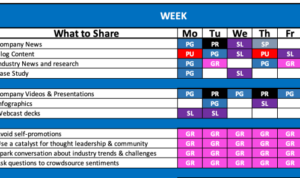Get ready to dive into the world of cardio exercises for heart health with a mix of running, swimming, and cycling. We’re about to break down the benefits, types, and safety precautions to keep your heart pumping strong. Let’s get moving!
Benefits of Cardio Exercises for Heart Health
Cardio exercises play a crucial role in improving heart health by strengthening the heart muscle and improving overall cardiovascular function. These exercises are essential for maintaining a healthy heart and reducing the risk of heart disease.
Lower Blood Pressure
Regular cardio exercises like running, cycling, or swimming can help lower blood pressure levels. By engaging in these activities, the heart becomes more efficient at pumping blood, which can reduce the strain on the arteries and ultimately lower blood pressure.
Improved Circulation
Cardio exercises promote better circulation throughout the body by increasing the flow of oxygen-rich blood to various organs and tissues. This improved blood flow helps nourish the cells and remove waste products, leading to better overall health and function.
Reduced Risk of Heart Disease
Engaging in cardio exercises on a regular basis can significantly reduce the risk of developing heart disease. These exercises help control cholesterol levels, maintain a healthy weight, and improve overall heart function, all of which are essential for preventing heart-related conditions.
Types of Cardio Exercises
Cardio exercises come in various forms, each offering unique benefits for heart health. Let’s explore some common types of cardio exercises and how they benefit our hearts.
Running
Running is a popular form of cardio exercise that helps improve cardiovascular health by increasing heart rate and strengthening the heart muscle. It also helps in burning calories, reducing the risk of heart disease, and improving overall endurance.
Swimming
Swimming is a low-impact cardio exercise that is gentle on the joints while providing a full-body workout. It helps improve heart health by increasing circulation, reducing blood pressure, and enhancing lung capacity. Swimming also helps in burning calories and improving cardiovascular fitness.
Cycling
Cycling is an excellent cardio exercise that strengthens the heart muscle, improves circulation, and boosts overall cardiovascular health. It helps in reducing the risk of heart disease, controlling blood pressure, and increasing endurance. Cycling is a low-impact exercise that can be easily incorporated into daily routines.
High-Intensity Interval Training (HIIT) vs. Steady-State Cardio
HIIT involves short bursts of intense exercise followed by brief recovery periods, while steady-state cardio involves maintaining a consistent pace for an extended period. Both types of cardio exercises offer benefits for heart health, but in different ways.
– HIIT is effective in improving cardiovascular fitness, increasing metabolism, and burning calories in a shorter amount of time. It helps in strengthening the heart muscle and improving endurance.
– Steady-state cardio, on the other hand, helps in building a strong aerobic base, improving overall cardiovascular health, and increasing stamina. It is beneficial for long-duration activities like marathons or cycling events.
Overall, both HIIT and steady-state cardio can be effective in improving heart health, depending on individual fitness goals and preferences.
Frequency and Duration of Cardio Workouts
Regular cardio workouts are essential for maintaining optimal heart health. Let’s dive into the recommended frequency and duration of these workouts to keep your heart strong and healthy.
Recommended Frequency of Cardio Workouts
To promote heart health, it is generally recommended to engage in cardio workouts at least 3 to 5 times a week. This frequency allows your heart to work and strengthen consistently, reducing the risk of cardiovascular diseases.
Ideal Duration of Each Cardio Session
The ideal duration for a cardio session typically ranges from 30 to 60 minutes per session. However, if you’re just starting out, you can begin with shorter sessions and gradually increase the duration as your stamina improves.
Tips for Increasing Intensity and Duration
- Start Slow: Begin with a comfortable pace and gradually increase the intensity as you build endurance.
- Interval Training: Incorporate intervals of high-intensity exercises to challenge your heart and improve cardiovascular fitness.
- Progress Gradually: Increase the duration of your cardio sessions by 5-10 minutes every week to avoid overexertion and prevent injury.
- Listen to Your Body: Pay attention to how your body responds to the workouts and adjust the intensity and duration accordingly.
- Mix it Up: Include a variety of cardio exercises such as running, cycling, swimming, or dancing to keep your workouts interesting and engage different muscle groups.
Safety Precautions and Considerations
To ensure a safe and effective cardio workout routine, it is essential to take certain safety precautions and considerations into account. These measures can help prevent injuries and optimize the benefits of your exercise regimen.
Importance of Warming Up and Cooling Down
Warming up before engaging in intense cardio exercises is crucial for preparing your heart and muscles for the workout ahead. It helps increase blood flow, raise body temperature, and loosen up muscles, reducing the risk of strains and injuries. Cooling down post-workout allows your heart rate and breathing to gradually return to normal, preventing dizziness and promoting recovery.
- Start with a 5-10 minute low-intensity cardio activity like brisk walking or jogging to warm up your muscles.
- After your workout, spend another 5-10 minutes doing light cardio or stretching exercises to cool down.
- Remember to hydrate adequately before, during, and after your workout to maintain proper fluid balance.
Monitoring Heart Rate during Cardio Workouts
Keeping track of your heart rate during cardio exercises is essential to ensure you are working out at an intensity level that is safe and effective for your heart health. Monitoring your heart rate can help you adjust the intensity of your workout and prevent overexertion.
- Calculate your maximum heart rate by subtracting your age from 220. This gives you a rough estimate of how fast your heart should beat during exercise.
- Aim to keep your heart rate within 50-85% of your maximum heart rate during cardio workouts for optimal cardiovascular benefits.
- Use a heart rate monitor or check your pulse periodically during your workout to ensure you are within the target heart rate zone.






